Keynote Speakers

Laura Barca
Short biography:
Laura Barca is a researcher at the National Research Council of Rome, Italy. Her scientific interests are placed within the fields of Cognitive and Developmental Psychology, Cognitive Neuroscience, and Computational Psychiatry. Her recent work follows two main research topics: sensorimotor influences on concepts acquisition and development; predictive brain, emotion and interoceptive inference in typical population and in psychopathological conditions.
Abstract for ‘Emotions, interoceptive illusions and Eating Disorders through the lens of Active Inference’:
Interoception, or the sense of the internal state of the body, is key to the adaptive regulation of our physiological needs. Recent theories contextualize interception within a predictive coding framework, according to which the brain both estimates and controls homeostatic and physiological variables, such as hunger, thirst, and effort levels, by orchestrating sensory, proprioceptive, and interoceptive signals from inside the body. In this talk, we will discuss a series of behavioral experiments showing that: a) the state of our body (i.e., fatigued after a physical effort, that is, with accelerated heart rate) affects the processing of emotional faces, making us faster in processing emotional faces physiologically congruent with our state (i.e., fearful faces); b) by providing false interoceptive feedback (i.e. false acoustic feedback of accelerated heart rate) is it possible to induce an ‘interoceptive illusion’ (i.e., higher level of perceived effort). Finally, we propose a theoretical account of starvation symptom of Anorexia Nervosa (AN), within the Active Inference framework. We propose that AN patients actively use hunger to reduce the (excessive) uncertainty of their interoceptive signals, and ultimately to restore a unified sense of self.
Relevant background reading:
Barca, Laura. “Interoceptive Inference in Anorexia Nervosa.” Preprint. Open Science Framework, December 20, 2018. https://doi.org/10.31219/osf.io/2s7qk.
Iodice, Pierpaolo, Giuseppina Porciello, Ilaria Bufalari, Laura Barca, and Giovanni Pezzulo. “An Interoceptive Illusion of Effort Induced by False Heart-Rate Feedback.” Proceedings of the National Academy of Sciences 116, no. 28 (July 9, 2019): 13897–902. https://doi.org/10.1073/pnas.1821032116.
Pezzulo, G., P. Iodice, L. Barca, P. Chausse, S. Monceau, and M. Mermillod. “Increased Heart Rate after Exercise Facilitates the Processing of Fearful but Not Disgusted Faces.” Scientific Reports 8, no. 1 (January 10, 2018): 1–10. https://doi.org/10.1038/s41598-017-18761-5.
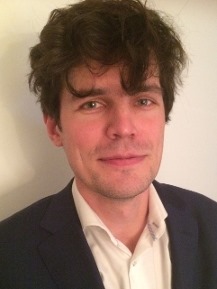
Jelle Bruineberg
Short biography:
Jelle Bruineberg is a post-doctoral researcher at Eindhoven Technical University and the University of Amsterdam. In his current work, he is interested in how technological devices (such as smartphones) structure a user’s space of action possibilities and their ways of engaging with these action possibilities. In his dissertation, he developed a proposal to naturalize skilled forms intentionality by means of integrating the free-energy principle with ecological and enactive cognitive science.
Abstract for ‘Putting the long-term self first: active inference and the time-scales of attention and agency’:
The initial optimism about the transformative prospects of Internet and digital technology is making way for a critical debate about their impact on our mental lives and society at large. Part of the debate zooms in on the “attention crisis”: the idea that the omnipresence of digital technologies limits our capability to pay attention to those things that matter to us. Especially, users report spending much more time scrolling and zapping than they are comfortable with. How do technologies shape our attention? And how do they detach users from their long-term plans? In this talk, I will address this question by integrating contemporary work on the neurobiology of habits and attention with views on habitual forms of intentionality. The active inference framework provides a mathematically concise account of how habits are formed and how they bias an agent’s attention, perception and action. I will discuss how habits can be both aligned and misaligned with an agent’s long-term plans.
Relevant background reading:
Aranda, Julie H., and Safia Baig. “Toward ‘JOMO’: The Joy of Missing out and the Freedom of Disconnecting.” In Proceedings of the 20th International Conference on Human-Computer Interaction with Mobile Devices and Services, 19:1–19:8. MobileHCI ’18. New York, NY, USA: ACM, 2018. https://doi.org/10.1145/3229434.3229468.
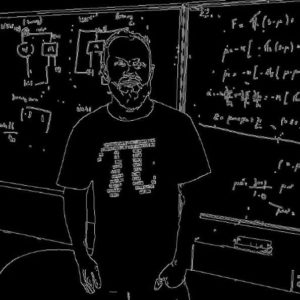
Christopher Buckley
Short biography:
Christopher L. Buckley is a senior lecturer in Neural Computation within the Evolutionary and Adaptive Systems (EASy) group at the University of Sussex. His interests lie at the intersection between neuroscience and enactive artificial intelligence. His lab conducts experimental work using calcium imaging to characterise the neural circuits underlying biological control in larval zebrafish. He also pursues modeling and theory work aimed at developing the ideas of active inference as a parsimonious description of sensorimotor control and learning.
Abstract for ‘Action-oriented generative models for behavior’:
The free-energy principle, and its corollary active inference suggest that both action and perception can be understood as minimization of variational free energy constrained by a probabilistic generative model of the agent’s environment. On slower timescales, it provides an account of learning as the optimization of the parameters of the agent’s generative model. However, the dynamic interaction of action, perception and learning under this framework has not been well studied.
The open-ended complexity of natural environments means that it is generally infeasible for agents to model their sensorimotor environment comprehensively. However, the presence of adaptive behavior constrains agents to behaviorally relevant trajectories reducing the diversity of the sensorimotor interactions they experience in their lifetime. Thus agents need not possess a comprehensive and veridical model of the environment but can operate on much simpler ‘action-oriented’ models that are tailored towards their sensorimotor trajectory. But how these actions oriented model could be learned is unclear. Specifically, at the onset of learning, agents must learn from limited sensory experience, and this can lead to models that initially overfit the environment and, as a consequence, make sub-optimal predictions about the consequences of action. Subsequently using these models to determine goal-oriented actions can result in biased and sub-optimal sensory samples from the environment, further compounding the model’s inefficiencies, and ultimately entrenching maladaptive cycles of learning and control, a process we refer to as a “bad-bootstrap”. Here, we exploit the normative framework of active inference to show that efficient action-oriented models can be learned by balancing goal-oriented and epistemic (information-seeking) behaviours in a principled manner. We first demonstrate that learning via goal-directed behaviour indeed constrains models to behaviorally relevant aspects of the environment, but that this approach is prone to sub-optimal convergence and bad bootstraps. We then demonstrate that while epistemic behaviors alone facilitate the construction of accurate and comprehensive models they are not tailored to any specific behavioral niche and are therefore are more complex and less efficient in their use of data. Finally, we show that active inference that combine goal-oriented and epistemic behavior agents learn models that are parsimonious, tailored to action, and avoiding bad bootstraps and sub-optimal convergence. Critically, our results indicate that models learned through active inference can support adaptive behavior in spite of, and indeed because of, their departure from veridical representations of the environment. Our approach provides a principled method for learning adaptive models from limited interactions with an environment, highlighting a route to sample efficient learning algorithms.
Relevant background reading:
Buckley, Christopher L., Chang Sub Kim, Simon McGregor, and Anil K. Seth. “The Free Energy Principle for Action and Perception: A Mathematical Review.” Journal of Mathematical Psychology 81 (December 1, 2017): 55–79. https://doi.org/10.1016/j.jmp.2017.09.004.
Baltieri, Manuel, and Christopher L. Buckley. “PID Control as a Process of Active Inference with Linear Generative Models.” Entropy 21, no. 3 (March 2019): 257. https://doi.org/10.3390/e21030257.
Tschantz, Alexander, Anil K. Seth, and Christopher L. Buckley. “Learning Action-Oriented Models through Active Inference.” BioRxiv, September 11, 2019, 764969. https://doi.org/10.1101/764969.

Paco Calvo
Short biography:
I am Full Professor of Philosophy of Science, and Principal Investigator of MINTLab (Minimal Intelligence Lab— http://www.um.es/web/minimal-intelligence-lab) at the University of Murcia (Spain). I specialized in the philosophy of cognitive science courtesy of a Fulbright scholarship in the late 90s (University of California, San Diego), and received a Ph.D. in Philosophy from the University of Glasgow (UK) in 2000.
My current research interests range broadly within the cognitive sciences, with special emphasis on plant intelligence, ecological psychology and embodied cognitive science. My articles have appeared in Adaptive Behavior, Behavioral and Brain Sciences, The British Journal for the Philosophy of Science, Cognitive Science, Cognitive Systems Research, Frontiers in Psychology, International Journal of Philosophical Studies, Journal of Consciousness Studies, Journal of the Royal Society, Mind & Language, Minds and Machines, Philosophical Psychology, Plant, Cell & Environment, Plant Signaling & Behavior, Studies in History and Philosophy of Science, Synthese, Trends in Cognitive Sciences (commissioned, in preparation) and Trends in Plant Science (commissioned, in preparation), among other journals.
I have likewise co-edited a number of volumes for academic audiences: The Handbook of Cognitive Science: An Embodied Approach, Elsevier, 2008; The Routledge Companion to Philosophy of Psychology, Routledge, 2009; and The Architecture of Cognition, MIT Press, 2014.
As to my research at MINTLab, I study the ecological basis of plant intelligence by conducting experimental studies at the intersection of the areas of plant neurobiology and ecological psychology. My lab uses time-lapse photography to observe plant roots and shoots navigational capacities, and to critically explore the theoretical underpinnings of cognitivist interpretations of plants’ adaptive behavior. To do so, we use behavioral methods in order to explore perception-action, and learning in plants, at the level of both roots and shoots.
I am currently being supported by the US Office of Naval Research to investigate vegetable sources of bioinspiration for Robotics and AI (Project title: “Plant Intelligence for Robotics and AI”). In the past, my research has been supported by a variety of funding agencies: British Council, The Darwin Trust of Edinburgh (in collaboration with the Institute of Cell and Molecular Biology, University of Edinburgh), The Sir Richard Stapley Educational Trust, the Fulbright Program, and Fundación Séneca. In 2016 I was supported by the Spanish Ministry of Education, Culture and Sport through a ‘Stays of professors and senior researchers in foreign centres’ fellowship to spend a sabbatical leave at the EIDYN Research Centre and the Institute of Molecular Plant Sciences at the University of Edinburgh, where I started working on a book project, “Do Plants Think?”, currently underway.
Abstract for ‘In the mood for food (for thought)’:
Plants rely on a complex vascular network based on action potentials transmitted along phloem conduits that, through anastomoses and other cross‐links, allows them to coordinate their behavioural responses via phenotypic plasticity, and thereby gain knowledge of the environment. The potential for this excitable network to form mental states is currently unknown (Calvo 2017). In this talk I consider the implications for plant consciousness (Calvo et al. 2017) of the integration of the active inference framework (Linson et al 2018) and ecological psychology principles (Bruineberg & Rietveld 2019) in the emergent field of plant neurobiology (Calvo 2016; Segundo-Ortin & Calvo 2019). Today we know that plants are subject to reversible anesthetic treatment (Yokawa et al. 2019). The case of plants under anesthesia constitutes a specially promising avenue of research. According to a free-energy approach, emotions have to do with the predicted consequences of action (Clark et al. 2019). Low energy brain states serve to maintain conscious awareness (Riehl et al. 2017). Plant-PET scans allow plant scientists to map phloem and xylem pathway couplings of plants in vivo. Insofar as plant-PET can be applied non-invasively it holds promise to help unearth correlations at the psychophysiological level (Calvo & Friston 2017). In particular, I propose to extend this model to the study of plant sentience by considering the way in which anesthetics may alter patterns of connectivity between different vascular areas. It is possible that the vascular system of plants ‘put to sleep’ spends less time in lower energy states than during ‘wakefulness’.
Relevant background reading:
Calvo, Paco, František Baluška, and Andrew Sims. “‘Feature Detection’ vs. ‘Predictive Coding’ Models of Plant Behavior.” Frontiers in Psychology 7 (October 4, 2016). https://doi.org/10.3389/fpsyg.2016.01505.
Calvo, Paco, and Karl Friston. “Predicting Green: Really Radical (Plant) Predictive Processing.” Journal of the Royal Society Interface 14, no. 131 (June 2017). https://doi.org/10.1098/rsif.2017.0096.
Julian Kiverstein
Short biography:
Coming soon.
Abstract for ‘The Organicist Challenge to the Ergodicity Assumption’:
The Free Energy Principle starts from the assumption that living systems are ergodic. “This means that one can interpret the average amount of time a state is occupied as the probability of the system being in that state when observed at random.” (Friston 2013: p.2). Given the ergodicity assumption, living systems can be modelled as random dynamical systems that tend to consistently revisit the neighbourhood of a set of attracting sensory states over time – what is sometimes called the “viability set”. The living system possessing a Markov blanket ensures that it actively maintains its structural and dynamic intergrity over time (Friston 2013: p.10). But what would the implications be for FEP if it turned out that living systems were non-ergodic (Colombo & Wright 2018). Organicists like Stuart Kauffman, have argued that the phase space for biological systems changes continuously over time, and does so in ways that cannot be prestated or predicted in advance. Organisms function as historically grounded constraints on a continuously changing phase space. Historical lineage is therefore a necessary part of understanding how organisms come to have the organisation they do. Organisms are not aptly represented as random dynamical systems because such a model of organisms would imply that history is irrelevant, or at least the path dependence organicists take to be necessary would be missing. I will call this challenge to FEP the Organicist Challenge. The aim of my talk will be to show how so-called “ecological and enactive” readings of FEP can meet the Organicist Challenge without abandoning the Ergodicity Assumption.
Relevant background reading:
Kiverstein, Julian, Ludger van Dijk, and Erik Rietveld. “The Field and Landscape of Affordances: Koffka’s Two Environments Revisited.” Synthese, March 20, 2019. https://doi.org/10.1007/s11229-019-02123-x.
Kiverstein, Julian, Erik Rietveld, Heleen A. Slagter, and Damiaan Denys. “Obsessive Compulsive Disorder: A Pathology of Self-Confidence?” Trends in Cognitive Sciences 23, no. 5 (May 1, 2019): 369–72. https://doi.org/10.1016/j.tics.2019.02.005.
Kirchhoff, Michael D., and Julian Kiverstein. “How to Determine the Boundaries of the Mind: A Markov Blanket Proposal.” Synthese, August 19, 2019. https://doi.org/10.1007/s11229-019-02370-y.
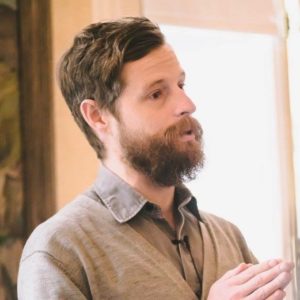
Mark Miller
Short biography:
Mark Miller’s research tends to gravitate towards philosophy of cognitive science and neuroscience – especially affective neuroscience. His recent work focuses on embodied predictive processing, and all of the reasons the predictive mind should be studied as part of the much wider system that inevitably includes the organism’s body and environment. Mark is currently a post-doctoral researcher on Andy Clark’s ERC grant Expecting Ourselves: Embodied Prediction and the Construction of Conscious Experience, at the University of Sussex.
Abstract for ‘Temporal Error Dynamics and the Surprise-Seeking Predictive Animal’:
Temporal error dynamics, that is the relative rate at which prediction error is resolved over time, plays a central (yet still largely overlooked) role in the predictive processing story. Bringing these dynamics to the forefront of the discussion both showcases the deeply embodied character of the predictive process and helps to resolve various puzzles faced by the framework today (including the “dark room” worry). In this talk, I will present recent collaborative research with Julian Kiverstein (University of Amsterdam) and Erik Rietveld (University of Amsterdam) on the nature of these dynamics, and the pivotal role they play in our understanding of the life (and challenges) of the prediction error minimizing animal.
Relevant background reading:
Kiverstein, Julian, Mark Miller, and Erik Rietveld. “The Feeling of Grip: Novelty, Error Dynamics, and the Predictive Brain.” Synthese 196, no. 7 (July 1, 2019): 2847–69. https://doi.org/10.1007/s11229-017-1583-9.

Nico Orlandi
Short biography:
Coming soon.
Abstract for ‘Bayesian perception is ecological perception’:
There is a certain excitement in vision science concerning the idea of applying the tools of Bayesian decision theory and of prediction-error minimization to explain our perceptual capacities. Bayesian and predictive coding models are often treated as equivalent and they are thought to rescue a certain constructivist and Kantian way of understanding the perceptual process. I argue that Bayesian outlooks are not equivalent to predictive coding outlooks, and that they are not constructivist in nature. In explaining how visual systems derive a single percept from underdetermined stimulation, orthodox versions of predictive coding accounts encounter a problem. The problem shows that such accounts need not be Bayesian, and that a predictive coding process needs to be grounded in Natural Scene Statistics (NSS). NSS is an approach that takes seriously the Gibsonian insight that studying perception involves studying the statistical regularities of the environment in which we are situated. Additionally, I argue that predictive coding frameworks postulate structures that hardly rescue a constructivist way of understanding perception. Safe for percepts, the posits of predictive coding theory are not representational in nature.
Relevant background reading:
Orlandi, Nico. “Bayesian Perception Is Ecological Perception.” Philosophical Topics 44, no. 2 (2016): 327–52.
Orlandi, Nico. “Predictive Perceptual Systems.” Synthese 195, no. 6 (June 1, 2018): 2367–86. https://doi.org/10.1007/s11229-017-1373-4.
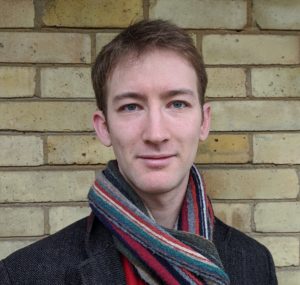
Thomas Parr
Short biography:
Thomas began his academic career at University College London (UCL) medical school. After completing an undergraduate degree in Medical Sciences with Neuroscience, he enrolled on the UCL MBPhD programme, combining his PhD with clinical studies. He works in the theoretical neurobiology group, led by Professor Karl Friston, at the Wellcome Centre for Human Neuroimaging at the UCL Institute of Neurology. His research interests include active inference, computational neurology, and the oculomotor system.
Abstract for ‘Continuous and discrete timescales for biological inference’:
Hierarchies of fast and slow timescales are well recognised in neurobiology; and in the life-sciences more broadly. However, recent theoretical advances emphasise a more qualitative distinction in how we deal with time. This is the difference between thinking in terms of rates of change, or sequences of events. In this talk, we address this distinction from the perspective of active inference. We begin with an overview of this approach, which rests upon the idea of an internal (generative) model used to make predictions about sensory data. Active inference formulates action as a process of optimising these data in relation to a model. For example, predicted proprioceptive data may be realised by contracting skeletal muscles. When this model is articulated in terms of rates of change, we can interpret the resulting inferences as engaging in predictive coding. This is useful in solving motor problems, which interface with a continuous, Newtonian world. Alternatively, a generative model could be expressed in terms of a discrete sequence. In this setting, inference becomes a process of decision making, involving selecting between alternative sequences of actions. This talk will unpack each of these forms of inference in turn, before addressing their reconciliation. In brief, this means inferring both what to do and how to do it.
Relevant background reading:
Parr, Thomas, and Karl J. Friston. “The Discrete and Continuous Brain: From Decisions to Movement—And Back Again.” Neural Computation 30, no. 9 (June 12, 2018): 2319–47. https://doi.org/10.1162/neco_a_01102.
Parr, Thomas, and Karl J. Friston. “The Anatomy of Inference: Generative Models and Brain Structure.” Frontiers in Computational Neuroscience 12 (2018). https://doi.org/10.3389/fncom.2018.00090.
Parr, Thomas, Dimitrije Markovic, Stefan J. Kiebel, and Karl J. Friston. “Neuronal Message Passing Using Mean-Field, Bethe, and Marginal Approximations.” Scientific Reports 9, no. 1 (February 13, 2019): 1–18. https://doi.org/10.1038/s41598-018-38246-3.
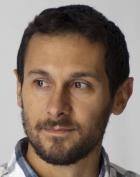 Giovanni Pezzulo
Giovanni Pezzulo
Short biography:
Giovanni Pezzulo is a researcher at the National Research Council of Rome, Italy. His main scientific interests are in the fields of cognitive and computational neuroscience. He studies goal-directed decision-making, predictive processing, embodied cognition and social interaction, with a combination of theoretical, empirical, computational modelling and robotic approaches.
Abstract for ‘Nested timescales of inference underlying action planning’:
Predictive processing views suggest that the brain is continuously engaged in generating predictions at multiple timescales, from the most immediate events (including action outcomes) to the more distal ones, which are key to prospective and future-oriented cognition. I will discuss the computational mechanisms underlying prospective forms of decision-making and planning, when these are described as inferential processes, as in Active Inference or planning-as-inference. Specifically, I will focus on the fact that planning requires balancing two nested timescales of inference, the former within the current action-perception loop and the latter more detached from the ongoing interaction, and potentially spanning multiple action-perception loops. Moving from computational principles to neuronal processing, I will discuss how this separation of timescales relates with a separation between stimulus-tied and internally generated (or spontaneous) brain dynamics. I will exemplify these ideas by reviewing evidence on internally generated sequences of neuronal activity in the hippocampus, and consider how they may be part of an inferential system that optimizes goal acquisition at the timescales of on-line choice, action planning and learning.
Relevant background reading:
Pezzulo, Giovanni, Francesco Rigoli, and Karl Friston. “Active Inference, Homeostatic Regulation and Adaptive Behavioural Control.” Progress in Neurobiology 134 (November 1, 2015): 17–35. https://doi.org/10.1016/j.pneurobio.2015.09.001.
Pezzulo, Giovanni, and Paul Cisek. “Navigating the Affordance Landscape: Feedback Control as a Process Model of Behavior and Cognition.” Trends in Cognitive Sciences 20, no. 6 (June 1, 2016): 414–24. https://doi.org/10.1016/j.tics.2016.03.013.
Pezzulo, Giovanni, Francesco Rigoli, and Karl J. Friston. “Hierarchical Active Inference: A Theory of Motivated Control.” Trends in Cognitive Sciences 22, no. 4 (2018): 294–306. https://doi.org/10.1016/j.tics.2018.01.009.
Stoianov, Ivilin Peev, Cyriel M. A. Pennartz, Carien S. Lansink, and Giovani Pezzulo. “Model-Based Spatial Navigation in the Hippocampus-Ventral Striatum Circuit: A Computational Analysis.” PLOS Computational Biology 14, no. 9 (September 17, 2018): e1006316. https://doi.org/10.1371/journal.pcbi.1006316.

Pauline Schaap
Short biography:
After obtaining a B.Sc. in Chemistry at a polytechnic institute in Leiden, The Netherlands, I worked as a research associate, investigating acetylcholine signalling in brain and muscle for six years before starting my Ph.D. research on developmental signalling in Dictyostelia at Leiden University. Upon completion of my Ph.D. in 1987, I was appointed as lecturer and senior lecturer at the same University, continuing research on the same topic. In 1999, I moved to Dundee University in the UK, where I was appointed as professor. From then on my research started to focus progressively on the question how the cellular communication systems that control growth, development and cell death in multicellular organisms evolved from earlier sensing mechanisms. In this period, my lab was involved in construction the first molecular phylogeny of all known Dictyostelium species and in sequencing and comparative analysis of genomes representative of each of the major clades of Dictyostelia. We retraced the origins of the multiple functions developmental cyclic AMP signalling in Dictyostelia to a role as second messenger in stress-induced encystation in single-celled amoebozoa and we identified cyclic di-GMP as the signal that induces the altruistic cell death pathway of stalk cell differentiation.
Abstract for ‘Cell communication systems in social amoebas and their evolutionary origins in the unicellular ancestors’:
I will briefly summarize the mechanisms for cell communication that are used by social amoebas to collect into aggregate and build multicellular fruiting structures. Next I will next report on evolutionary comparative studies that describe how some of these mechanisms emerged from mechanisms for sensing environment stress in solitary amoebas. I will further highlight comparative genomic studies within Amoebozoa that highlight the immense sensory potential of solitary amoebas.
Relevant background reading:
Ritchie, Allyson V., Saskia van Es, Celine Fouquet, and Pauline Schaap. “From Drought Sensing to Developmental Control: Evolution of Cyclic AMP Signaling in Social Amoebas.” Molecular Biology and Evolution 25, no. 10 (October 1, 2008): 2109–18. https://doi.org/10.1093/molbev/msn156.
Hillmann, Falk, Gillian Forbes, Silvia Novohradská, Iuliia Ferling, Konstantin Riege, Marco Groth, Martin Westermann, et al. “Multiple Roots of Fruiting Body Formation in Amoebozoa.” Genome Biology and Evolution 10, no. 2 (February 1, 2018): 591–606. https://doi.org/10.1093/gbe/evy011.
Peggy Seriès
Short biography:
Coming soon.
Abstract for ‘Timescales of Prior Integration’:
Coming soon.
Relevant background reading:
Coming soon.
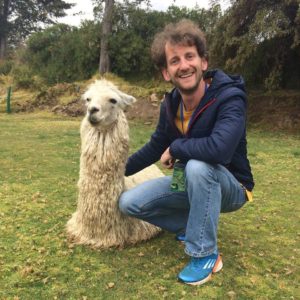
Dave Ward
Short biography:
Dave is a lecturer in philosophy at the University of Edinburgh. He is interested in working out the relationships between perception, agency and understanding, and using both cognitive science and the history of philosophy to do this. One aspect of this involves thinking about the scope and limits of embodied, extended and ‘enactivist’ approaches in philosophy of mind and cognitive science. Another aspect is trying to work out what German Idealists (like Kant and Hegel) and Phenomenologists (like Merleau-Ponty) have to teach us about these relationships.
Abstract for ‘What is it like to be a Battalion?’:
Can groups have emergent conscious states? That is, is there something it’s like to be some groups, over and above what it’s like to be any of their constituents? I’ll argue that a necessary condition for group consciousness is perspectival unity – a defender of group consciousness needs to explain the way in which conscious states are integrated into a unified perspective that can be properly attributed to the group. I’ll argue for a particular way of meeting this unity condition – unity as intentional access to the contents of conscious states – and show how this condition can be met by a suitably organised group. Distributed artificially intelligent cyborg spaceships will be involved. I’ll end by considering whether or not supplying sufficient conditions for group consciousness involves solving the ‘Hard Problem’ of consciousness, and whether there might be real-world cases of group consciousness according to the model I’ve supplied.
Relevant background reading:
Ward, Dave. “Hurley’s Transcendental Enactivism.” Journal Of Consciousness Studies 23(5-6) (June 2016): 12–38.





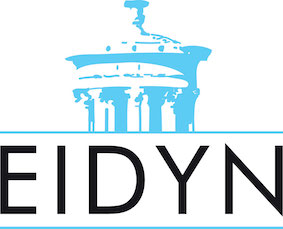
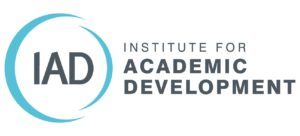

Comments are closed
Comments to this thread have been closed by the post author or by an administrator.